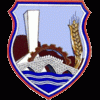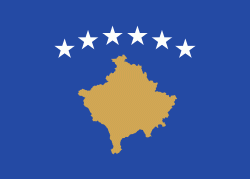Vučitrn (Vushtrri)
 |
In antiquity, Vushtrri may have been known as Viciana. When the Roman Empire invaded Dardania in the 1st century BC, the Romans added the Latin suffix 'um' to the name of Viciana, therefore becoming Vicianum. In Serbian, Vučitrn is the name of the plant Ononis spinosa, which is abundant in the region.
The main characteristic of the city is its cultural and historic monuments. The city's castle, stone bridge, public bath and česme (fountain) were built centuries ago and are the biggest attractions of the city.
Vushtrri has a total area of 345 km2, and the density of population is 202/km2. The area accounts for approximately 3.2% of the total territory of Kosovo.
The Dardani tribe ruled the region in the Iron Age, until the Roman conquest in the 1st century AD. Archaeological sites exist at various places in the vicinity, including Samodrezha, Pestova, Duboc Fortress, Stroc Castle and Breglumi. The region then came under Byzantine rule and later in 1389, under Ottoman rule.
In 1487, Albanian toponyms, such as Shalc, Kuçiq and Guri i Kuq are mentioned in the Nahija of Vushtrri.
During the 1999 Kosovo Independence war, Vushtrri suffered greatly in loss of human life (see Vushtrri massacre) and arson and razing of historical buildings by the Serbian paramilitary forces. The destroyed monuments range from old Ottoman style houses to many historical Ottoman mosques, such as Gazi Ali Beg Mosque (1410).
Map - Vučitrn (Vushtrri)
Map
Country - Kosovo
 |
 |
In classical antiquity, the central tribe which emerged in the territory of Kosovo were the Dardani, who formed an independent polity known as the Kingdom of Dardania in the 4th century BC. It was annexed by the Roman Empire by the 1st century BC, and for the next millennium, the territory remained part of the Byzantine Empire, whose rule was eroded by Slavic invasions beginning in the 6th–7th century AD. In the centuries thereafter, control of the area alternated between the Byzantines and the First Bulgarian Empire. By the 13th century, Kosovo became the core of the Serbian medieval state, and has also been the seat of the Serbian Orthodox Church from the 14th century, when its status was upgraded to a patriarchate. Ottoman expansion in the Balkans in the late 14th and 15th century led to the decline and fall of the Serbian Empire; the Battle of Kosovo of 1389 is considered to be one of the defining moments in Serbian medieval history. The Ottomans fully conquered the region after the Second Battle of Kosovo. The Ottoman Empire ruled the area for almost five centuries until 1912.
Currency / Language
| ISO | Language |
|---|---|
| SQ | Albanian language |
| SR | Serbian language |
















